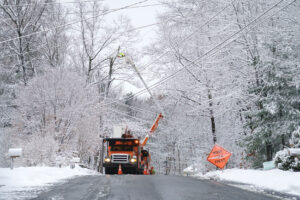 “America’s not-for-profit electric cooperatives need flexibility and a common-sense regulatory framework that provides long-term certainty to meet their members’ energy needs,” said Jim Matheson, National Rural Electric Cooperative Association’s chief executive officer, in response to the EPA’s recent decision to rescind the Clean Power Plan. “This announcement is a critical step toward replacing the Clean Power Plan with a sound regulation that adheres to decades of EPA precedent while providing much-needed flexibility and certainty.
“America’s not-for-profit electric cooperatives need flexibility and a common-sense regulatory framework that provides long-term certainty to meet their members’ energy needs,” said Jim Matheson, National Rural Electric Cooperative Association’s chief executive officer, in response to the EPA’s recent decision to rescind the Clean Power Plan. “This announcement is a critical step toward replacing the Clean Power Plan with a sound regulation that adheres to decades of EPA precedent while providing much-needed flexibility and certainty.
“Electric co-ops are dedicated to a healthy environment, vibrant rural communities and prioritizing the needs of their members. These factors, along with market forces, are driving co-ops to enhance the diversity of their electric generating portfolio to affordably and reliably meet their members’ energy needs.
“We look forward to working with the administration and other stakeholders on solutions that protect our environment, promote the diversity of our energy supply and bolster rural America,” Matheson said.
Electric co-ops nationwide are reducing their carbon footprint, including investing billions of dollars in renewable technology and energy efficiency. Since 2005, co-ops have increased electric generation by 15 million megawatt-hours while reducing carbon dioxide emissions by nearly 10 percent.
Collectively, co-ops own or purchase more than 18 gigawatts of renewable energy capacity, with another 1.4 gigawatts planned. In response to member requests, co-ops have doubled their wind energy use in the past six years and have installed more community solar than any other part of the electric sector.








